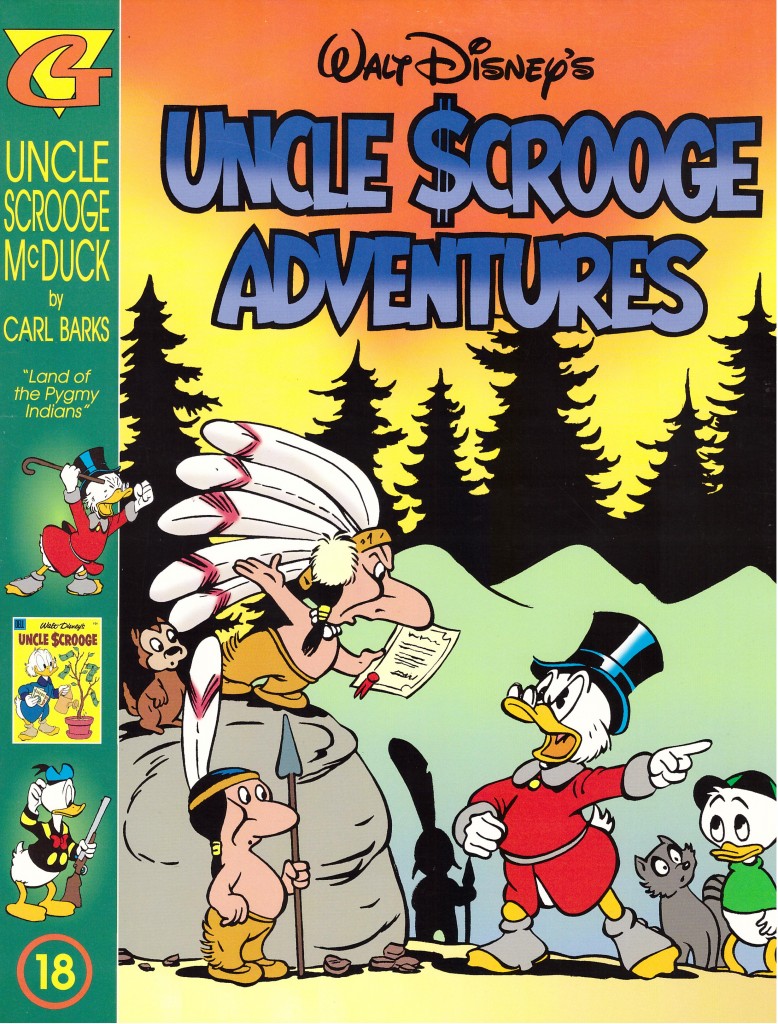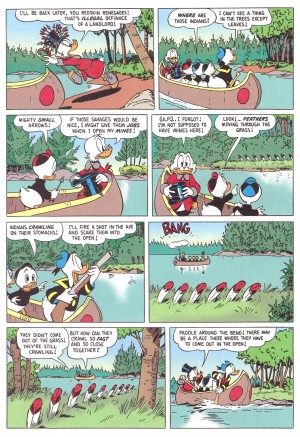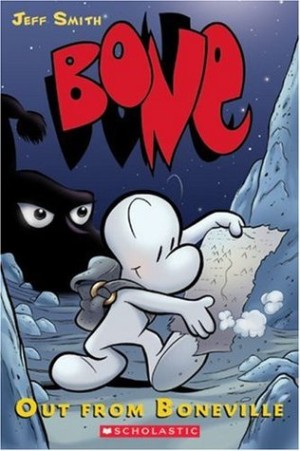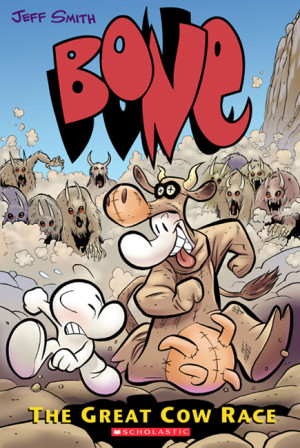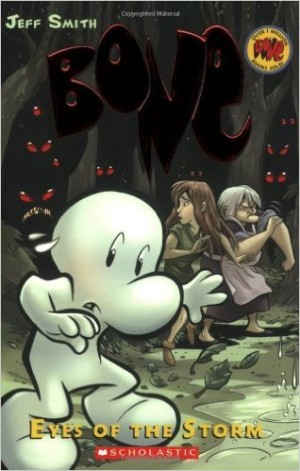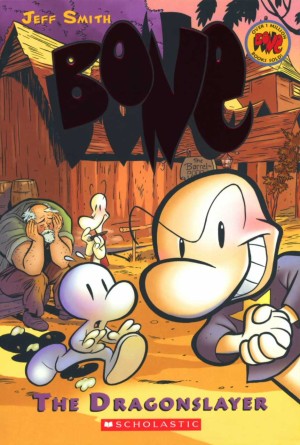Review by Frank Plowright
‘Land of the Pygmy Indians’ is a story that’s more problematical today than it was when first published in 1957 due to a perception that the diminutive Native Americans of the title could cause offence. Carl Barks was not a creator intentionally likely to do so, but changing times meant that for a long while Disney forbad the English language publication of a 1990s sequel by Don Rosa. Barks’ presentation of Native Americans is far more dignified than the popular Western movies of the era, and while some people may be offended, surely most will read the story in the spirit it was created, lacking any pernicious intent.
Scrooge, Donald Duck and his nephews start the adventure with Scrooge’s purchase of a massive chunk of land carrying the guarantee that no-one lives there. He’s sick of the pollution and overcrowding in cities and wants some peace and fresh air. Amusingly, Barks has Scrooge acknowledge his factories are responsible for the air pollution, and plenty of further comments about land ownership and environmental abuse are relayed in passing, Barks uncharacteristically over-egging the point.
Barks himself turned his back on a city career in preference for a more isolated lifestyle, so there’s little doubt where his sympathies lie in this story of nature vs development. It’s a story that differs from the Scrooge material Barks generally produced at the time, the premise being used to string together a selection of gag sequences and investigate Scrooge’s fundamental character. The gags are inventive and beautifully paced, culminating in a brilliant visual set piece that draws on Barks’ animation experience, of Donald having to land a giant sturgeon, yet it’s the character exploration that has the greater value. Scrooge, despite yearning for peace is involved in a recurring joke concerning his inability to see land except in terms of exploitation. The Peeweegahs, having lived traditionally in harmony with the land for centuries combat this intrusion. Barks had softened Scrooge’s personality considerably since starting to feature him as a lead character, but ‘Land of the Pygmy Indians’ is the truest test of his over-riding motivation. Can he overcome his primary instinct to earn money from every possible source? It’s an issue that’s cleverly fudged.
A curiosity ends the book, a single page written by Kim Weston and illustrated by Walt Simonson in the style of Barks. Produced in the early 1970s long before collections of Barks material were considered, it’s a pithy comment on the cost of piecing together every issue of his work. That’s not found in the otherwise very complete Lost Crown of Genghis Khan, which gathers this along with Barks’ stories from the previous five albums along with contemporary cover illustrations and informed commentary. The story can also be found in the first volume of the Barks/Rosa Collection coupled with Rosa’s sequel.
